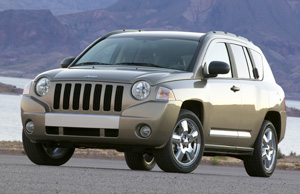
Despite a 3% decline in year-over-year sales last month, Chrysler Group managed to reduce its stockpile of surplus vehicles 56%, compared with September, according to Ward's data.
It is a welcome trend for Chrysler as it attempts to eliminate the oversupply, which drew fire from industry observers after Ward's revealed the vehicles are not included in the auto maker’s reported inventory.
A Ward's analysis of Chrysler sales and reported inventory totals indicates the auto maker had, by October’s end, an estimated 22,000 vehicles it classifies as “unassigned” because they have no corresponding dealer orders. That number was about 50,000 at the end of September.
The auto maker counts as inventory those vehicles that have been ordered by dealers. That total stood at 509,000 for October, the auto maker says, down from 529,000 the previous month.
Stephen Landry, vice president-sales and field operations, would say only that there remains a “very small amount of unassigned inventory.” The goal is “to get to zero by the end of the calendar year,” he says.
“We feel very comfortable that we’re on track with that,” Landry adds.
Chrysler’s “sales bank” was as high as 100,000 in August, the auto maker has acknowledged.

It was amassed by accident, Landry tells journalists and analysts during a Nov. 1 teleconference. Gasoline price spikes and a resulting market shift away from trucks and SUVs conspired against the auto maker, he explains.
Exacerbating these circumstances, Chrysler plants kept pumping out product because executives believed the trend would reverse itself, as admitted by Dieter Zetsche, chairman of Chrysler’s corporate parent, DaimlerChrysler AG.
The accumulation of unsold stock was “just a situation that happens,” Landry says, adding Chrysler is committed to preventing a reoccurrence.
“We’re certainly not condoning it. It’s not part of our business plan. It’s just a situation that our dealers and ourselves are working on together to pare it down by the end of the year.”
And even though Chrysler appears to be the only major auto maker to maintain a stockpile of vehicles outside its reported inventory, Landry says the practice does not compromise transparency.
“The auditors have reviewed our situation on unassigned inventory and they’re OK with it,” he says.
Chrysler brand October sales were off 20% vs. year-ago, while Dodge deliveries – offset by encouraging response to the new Nitro SUV, continued demand for the Caliber small car and solid performance by the Ram pickup – declined 4%.
Jeep was the bright spot, with a 24% sales jump, aided by robust orders for the new Compass cross/utility vehicle and a strong showing by the Wrangler SUV. Wrangler deliveries were more than double year-ago, boosted by demand for the redesigned ’07 lineup that features the 4-door Unlimited.
Of the 8,679 Wranglers sold, which includes ’06 models, 42% were ’07 Unlimiteds, Landry says.
But even the Jeep story was tarnished. The rugged brand, which has seen its fullsize Commander suffer from SUV backlash, was the industry’s biggest spender on incentives last month at $5,763, says Edmunds.com.
On average, 20.7% of the price of every Jeep vehicle goes toward the cost of incentives, reports Edmunds, which tracks total incentive spending by auto makers.
Meanwhile, Dodge was second with an average spend of 13.7%. Scion and Porsche brands were at the other end of the spectrum, spending 0.4% and 0.8%, respectively.
But Michael Manley, Chrysler vice president-sales, strategy and dealer operations, expects the auto maker’s incentive spend to trend downward.
“When any manufacturer switches over model-year, what you see is a net down on incentives as you blend out of your previous model year,” Manley says. “And that’s exactly what you will see with us.”



